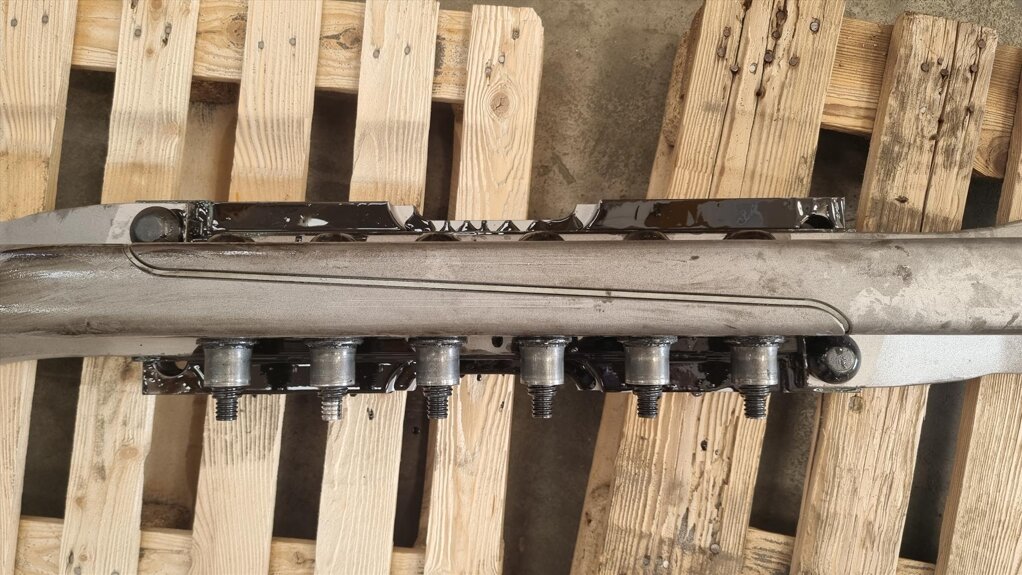
The Idea
Scarf joints with standard rails?
The easiest solution to reduce the impacts is to make the transition longer by inclining the cut from straight (90°) to shallow. This solution is not feasible with conventional rails as their web is too thin and it cannot sufficiently support the railhead.
Obviously, no joints of this kind were ever produced.

Use of full depth thick web rails?

Some previous studies using thick web rails typically adopted in bridge expansion joints and switch blades were discontinued because of costs and practical matters (welding difficulties, insufficient performances).
These solutions required special rail fastenings and were not compatible with standard track components.
The Idea - or how to eliminate shocks
Using shallow depth asymmetric switch rails
Introducing a joint cover supported on a sleeper


Standard components!
Exploiting at the best the difference in height between rails and switch rails
The only standard rail that has a larger web is the switch rail. By mating two properly shaped forged switch rails a long transition can be easily obtained. There is no need to manufacture specific components. Long forging of switch rails is common today with different switch rail profiles (e.g. 60E1A1, 60E1A2, etc.) by different suppliers around the world.
Rails are taller than switch rails as the latter have to slide on chairs in turnouts. For example, the 60E1A2 switch rail is 134 mm high while the 60E1 rail is 172 mm high. The idea is to fill the resulting gap (38 mm in this example) with a thick plate dramatically reinforcing the joint and totally eliminating the stiffness discontinuity generating the dip angle.
The joint rests on a sleeper (i.e. it is "supported" and not "suspended" or "hanging" between the sleepers) reducing the stresses by a factor 1.5.
Removing the fishplates

Sticking to sleeper spacing - with standard components!!!

Tamping is much easier!
Limiting the transition lenght has its advantages
Fishplates were eliminated from the design. This means less components and easier tampinga, the track can be tamped continuously without any special provision, something that was not possible with fishplates.
Large bonding surfaces are obtained by the shallow cut and by the cover joint, so the "force multiplier" wedge effect given by the fishplates is not needed anymore.
The practical limit to joint length was carefully chosen to keep unchanged the distance between the sleeper. Sleeper spacing can stay at common value of 600 mm without any change.
We designed the joint in order to use standard sleepers, standard railpads and standard rail fastenings. Don't forget that tampers don't even notice the joint as fishplates disappeared!

Modularity, or horses for courses
Environment first!

Ideal for urban rail
Because not everybody has the same needs
Train noise has always been "clickety-clack". If kids may like this noise and it reminds us when rails were not welded, it constitues a serious problems (e.g. in transit stations or in elevated metros) where train noise and vibrations affect people living along railway lines.
The new joint completely avoids this noise, reducing at the same time vibrations transmitted to the ground.
Joints are designed to withstand high vertical loads and large traction forces during the cold season. What if the track is underground and the vehicles are lighter, as in many metros? The idea was to design a joint with an arbitrary number (let's say 2 to 8) fishbolts and simplified joint cover to adapt to each situation.